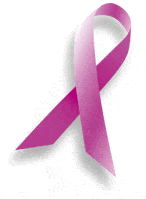Breast cancer is a major health concern for women in Wisconsin. Knowing the risk factors and being aware of early detection methods can be lifesaving actions.
At Ewings Medical Center, we take our commitment to providing the best breast cancer awareness resources to the community seriously. We provide information about the risk of breast cancer, encourage clinical breast exams, and consider medical history when making decisions about breast cancer surgery. We also offer advanced treatment options for patients diagnosed with advanced breast cancer.
We believe that knowledge is power. By providing our community with resources and information on preventive care and treatment, we are helping reduce the rates of this deadly disease in Wisconsin.

The American Cancer Society’s estimates for breast cancer in the United States for 2022 are as follows:
- 276,480 new cases of invasive breast cancer will be diagnosed in the United States.
- Over 48,530 women in the United States will die from breast cancer.
- Approximately 3,660 new cases of male breast cancer will be diagnosed.
- Breast cancer survival rates: There are an estimated 3.5 million survivors in the United States.
- About 85% of all breast cancers occur in women who are 50 years or older.
- Around 1 in 41 (2.4%) deaths among women will be from breast cancer.
- About 2,620 new cases of metastatic breast cancer will occur in the United States each year.
We don’t really know the actual cause of breast cancer. However, the American Cancer Institute suggests that approximately one in every four women will undergo a breast biopsy to evaluate a suspicious breast mass in her lifetime. Of this group, 12% will develop some variant of breast cancer. A total of 5-10% of these breast cancers are inherited (genetically passed). About 20%-30% will be familial (more common in certain families), and 55%-75% will be sporadic or new cancers that develop spontaneously.
Breast Cancer Incidence (Frequency)
Breast Cancer Risk Factor
A tremendous amount of promising cancer research is underway to determine the cause of breast cancer and to establish effective ways to prevent it and save lives. Anything that INCREASES your chance of developing breast cancer is a risk factor.
A protective factor is anything that REDUCES your risk of developing breast cancer. Although you can control many risk factors, doing so does not guarantee zero risk. You should also know that many women who have a particular risk factor for breast cancer never develop it.
The first risk factor is hormonal due to increased exposure to the hormone estrogen. This excessive exposure may be because of menarche (menses younger than 12 years old), nulliparity (lack of pregnancy), late menopause (menses stops after age 50), age of first born after the age of 30, five years of combined estrogen/progesterone hormone replacement therapy, and lastly obesity.
Non-hormonal factors may also increase the risk of breast cancer. It is well-documented that increased age causes a higher risk of breast cancer, as well as a positive family history of breast cancer. If the mother or daughter of the patient develops breast cancer, then that individual is probably at a 2-3 times greater risk of developing breast cancer at a later date. The risk factor, however, decreases in a woman with distant relatives who have breast cancer (cousins, aunts, grandmother). Another non-hormonal risk factor is a breast biopsy, which reveals the presence of abnormal cells, or cancer cells found in a previous biopsy. Radiation exposure and excessive alcohol usage are also non-hormonal risk factors for breast carcinoma.
Ways to Reduce the Risk of Breast Cancer
The best way to reduce the risk of developing any form of breast cancer is by undergoing early detection. This can be done through regular mammography screenings or clinical breast exams. Women should also be aware of their family history and talk to their doctors about genetic testing. If women are at a higher risk for breast cancer, they may need to take hormone therapies or other preventive medications to reduce the risk. Additionally, women should practice self-examinations and keep an eye on changes in the shape, size, and texture of their breasts. Lastly, women should always wear sunscreen when outdoors and cover up exposed areas of skin with clothing to protect against UV rays, which can damage the breast skin and increase the risk of certain types of breast cancer.
Tamoxifen is a type of medication commonly used to reduce the risk of developing breast cancer or to slow down the growth rate of existing breast cancer cells. Tamoxifen blocks the effect of estrogen, which can cause breast cancer. Studies have shown that taking this medication can reduce the risk of developing breast cancer in women who are at higher-than-average risk because of their family history or age. Women who are already diagnosed with breast cancer may also benefit from taking tamoxifen, as it can help slow down the cell growth rate of their tumor and prevent further spread of their cancer.


Are You Ready For A Consultation?
Join our satisfied clients who’ve experienced safe, effective treatments
Diagnosis of Breast Cancer
There are many ways of diagnosing breast cancer, the most common being breast self-exam. A second option is to have a yearly exam by a health professional. These exams should occur every 3 years between the ages of 20-40 and every year after the age of 40. Mammograms, or radiologic evaluations of the breast, are the best available technique for detecting breast carcinoma. However, this technique can miss the presence of a tumor 10% of the time. Currently, most centers recommend yearly mammograms after the age of 40. We recommend genetic testing in coordination with genetic counselors because 80% of inherited breast cancers have BRCA-1 or BRCA-2 gene mutation seen in the DNA. Other useful imaging techniques include ultrasound, which is extremely helpful in differentiating solid from fluid lesions, and MRI, which we use as an additional screening method in high-risk patients.
Following the finding of a breast mass on examination or during a mammogram, we usually recommend a biopsy. The goal of the biopsy is to obtain breast tissue that we may examine for malignant features. The provider will choose from the various biopsy techniques depending on whether the breast mass can be felt (palpable) or not felt (nonpalpable) upon physical examination. For the nonpalpable lesion, the technique involves a stereotactic core biopsy, which uses either a computer or mammogram machine to guide a needle to the biopsy site for examination.
The second way to detect or biopsy a nonpalpable lesion is using a wire-localized excisional biopsy, in which a radiologist uses a computer, mammogram, or ultrasound device to place a guidewire by the abnormal area. The surgeon follows this to the point of the abnormal tissue and then surgically removes the abnormal breast tissue. Both procedures are usually outpatient and under a local anesthetic. If the lesion is palpable or can be felt, your provider can perform fine needle aspiration or conduct a core biopsy or direct excision of the mass, usually under a local anesthetic on an outpatient basis.
Breast Anatomy
The breast is a gland designed to make milk. The lobules in the breast make the milk, which then drains through the ducts to the nipple. The breast is composed of 15 to 20 of these lobules, which then terminate into major ducts that open up into the nipple.
Breast Cancer Awareness Wisconsin Before and After Photos


* Each patient is unique and individual results may vary.
The Types of Breast Cancer
Noninvasive: The cancer cells have not invaded surrounding tissue.
The two types of noninvasive cancers are:
- Ductal carcinoma in situ – which occurs in 5%-10% of breast cancers
- Lobular carcinoma in situ – which occurs in 2%-5% of breast cancers
Invasive: The cancer cells have invaded the surrounding tissue.
The two types of invasive cancers are:
- Ductal carcinoma – which occurs in 60%-75% of breast cancers, begins in the ducts, and is the most common type of breast cancer.
- Lobular carcinoma – which occurs in 10% of breast cancers.
Treatment for Breast Cancer
Local treatment refers to anything that is targeted to a specific area of the body—such as the breast, the lymph nodes, and the lungs—as opposed to the whole body. Treatment of the lymph nodes near the breast is also sometimes referred to as “regional” treatment because the nodes lie in the region surrounding the breast.
The whole breast can be treated by mastectomy or breast preservation therapy.
Mastectomy
Mastectomy is a surgical procedure that treats breast cancer. It involves the removal of the entire breast and can also involve removing some or all of the chest wall muscles and nearby lymph nodes. Mastectomy is a major surgery that requires a long recovery period, but it may be necessary if cancer has spread beyond the breast tissue. After surgery, many women opt for reconstruction surgery to restore their breasts’ appearance.
There are several types of mastectomy: simple, modified radical, radical, and partial. A simple mastectomy removes only the breast tissue while keeping most of the skin intact. However, some chest muscles may still need to be removed. A modified radical mastectomy removes more than just the breasts but does not affect any organs in the chest cavity—just the breast cells and surrounding tissues. A radical mastectomy removes most of the breast tissue as well as parts of other organs in the chest cavity such as ribs, lymph nodes, and muscles. Partial mastectomies are much less invasive procedures that involve only removing part or all of one or both breasts and leaving some underlying muscle intact.
Breast Preservation Therapy
Breast preservation therapy is a common treatment for breast cancer. It involves removing just the cancerous cells while preserving as much of the healthy tissue as possible. This type of treatment is often used if the tumor has not spread to other parts of the body and if it can be completely removed with surgery. Breast conservation therapy may also involve radiation, chemotherapy, hormone therapies, or targeted treatments such as Herceptin.
Pros:
Breast preservation therapy allows patients to maintain their breasts’ appearance and avoid more extensive surgical procedures like a mastectomy. This type of therapy is less invasive than a mastectomy and requires a shorter recovery period. Patients who receive this type of treatment have a better quality of life after treatment because they don’t experience pain or disfigurement from the removal of their breast tissue. Patients may be able to keep their nipples and areola intact, which can help them feel more confident about their bodies after treatment.
Cons:
There is a greater risk that some cancer cells remain in the area and may regrow after treatment. The patient must undergo regular checkups to ensure that no new lumps or abnormalities are growing in the area. Mastectomy involves the removal of the entire breast. Mastectomy may be followed by radiation to the area where the breast used to be. Breast preservation therapy removes breast cancer by lumpectomy (also called “wide resection,” “partial mastectomy,” or “quadrantectomy”) and is also followed by radiation to the remainder of the breast tissue.
For women with a single tumor larger than about 4 cm, breast preservation therapy may still be an option if chemotherapy is able to shrink the cancer substantially BEFORE surgery.
The Sequence of Breast Cancer Treatment
Your team of doctors will most likely recommend a particular sequence of treatment. Here is the most common “pathway.”
Usually, surgery is first. If chemotherapy is going to be part of your care, it often goes second. Radiation usually follows surgery and chemotherapy (when chemotherapy is given). Tamoxifen or other hormonal (anti-estrogen) therapy is most commonly started after the patient has received other treatments.
This sequence has many exceptions, however. For women with cancer stage III or IV disease, chemotherapy may be given first to shrink large tumors and address cancer in the rest of the body before major surgery. Some centers or clinical studies give chemotherapy and radiation together (not separately). There are also many other variations in timing and sequence.
Following the above-noted procedures, a medical oncologist would then advise breast cancer patients of further treatment options after surgery is completed. This is usually based on the stages of breast cancer.
A new technique called a sentinel lymph node biopsy has been developed to help locate the lymph nodes during surgery. This technique is based on using a radioactive material, or blue dye, injected into the breast prior to surgery. The breast surgeon then uses the uptake of this radioactive dye to identify the lymph nodes during surgery that may be suspicious for containing spreading cancer. This helps guide the surgeon to the most likely node that may harbor cancer, thereby allowing the surgeon to biopsy these for the evaluation of cancer spread. This procedure is helpful because it limits the more aggressive armpit dissection, which may be required, and it lowers postoperative complications like nerve injury and arm swelling.
Breast Reconstruction Options
Breast reconstruction is an important step for many women after a mastectomy. Breast reconstruction involves reconstructing the shape and appearance of the breast using skin, connective tissue, and sometimes milk ducts that were not removed during the mastectomy. Breast reconstruction can help restore a sense of self-confidence and femininity after a significant breast abnormality.
The type of reconstruction will depend on the woman’s own preferences as well as her health status. The most common types of breast reconstruction are autologous (using your own healthy cells) or implant-based. Autologous reconstruction uses skin, glandular tissues, and fatty tissues from other parts of your body to create a new breast mound. Flap surgery is another type of autologous procedure in which the surgeon uses tissue from either the abdomen or back to reconstruct the missing part of the chest wall. Implant-based reconstruction uses saline or silicone implants to rebuild the shape and contour of the missing breast tissue.
When planning breast reconstruction, you should consider all available options before making a final decision regarding your care plan. You should also discuss any potential risks with your doctor prior to undergoing surgery so that you can make an informed decision about the best option for you.
You can read a detailed description in the Breast Reconstruction section for breast cancer survivors of the Restorative Breast Center.
Breast Cancer Awareness Wisconsin Before and After Photos


* Each patient is unique and individual results may vary.
Recovery after Breast Cancer
Nutrition after Breast Cancer Treatment
Giving your body the nutrients it needs is important for everyone. When combined with exercising and maintaining a healthy weight, eating well is an excellent way to help your body stay strong and healthy. Current research findings suggest that physical activity, a healthy diet, and a healthy weight can help reduce the risk of getting breast cancer for the first time or having breast cancer come back. A healthy diet—one with a variety of foods that includes lots of fruits and vegetables and regular protein—gives you the reserve of nutrients you need to keep your strength up while you’re fighting breast cancer.
These reserves also help rebuild your body’s tissues and keep your immune system strong to help fight off infection. Plus, a healthy diet can help you cope with treatment side effects. There is evidence that some cancer treatments actually work better in people who are eating enough calories and protein. While you’re having breast cancer treatment, it’s more important than ever that you eat a healthy diet.
Arm Lymphedema
Lymphedema (pronounced lim-fe-DEE-ma) is a side effect that can begin during or after breast cancer treatment. It isn’t life-threatening, but it can last over a long period of time. This condition involves swelling of the soft tissues of the arm or hand. The swelling may be accompanied by numbness, discomfort, and sometimes infection.
There’s no reliable way to find out your level of risk for lymphedema, but by taking proper precautions you CAN greatly reduce your chances of developing this complication. Lymphedema of the arm is an accumulation of lymph fluid in the soft tissues of the arm, with accompanying swelling (also called edema). To understand how it happens, you have to know a little bit about how blood and lymphatic fluid move around your body. You can think of lymphedema as a plumbing problem: Veins and lymphatic channels are like pipes and drains that can handle the normal load of lymphatic fluid. If lymph nodes and channels are removed, there might not be enough pipes and drains to handle all the fluid.
Some women have mild lymphedema, which is hardly noticeable. Some develop moderate lymphedema that may be noticeable, tends to persist, and gets worse when aggravated. Others have severe lymphedema that is very uncomfortable and even disabling. For all of these cases, treatments can help ease the discomfort and reduce the swelling.
Ways to avoid lymphedema: Prevention is the best tool against arm lymphedema. Learn the warning signs and the precautions to take. Make these guidelines and a heightened awareness a regular part of your life. Skincare is your first line of defense. Since the skin acts as a barrier to infection, any disruption of the skin can spell trouble. Burns, chafing, dryness, cuticle injury (such as hangnails), cracks, cuts, splinters, and insect bites are immediate risks for breast infection.
Dealing with Pain After Breast Cancer Treatment
For women affected by breast cancer, overcoming pain can be a major part of dealing with the disease and its treatment. Pain is a common side effect of treatment and also a side effect of cancer. However, you can take steps to manage the pain. Consult your physician if your pain continues to limit your daily life activities.
Your Immune System during Breast Cancer Treatment
The immune system responds immediately when your body encounters any threat, such as a virus or injury. In response to such threats, the immune system produces a generalized, non-specific reaction known as inflammation. This response is like an army artillery attack: Shells burst all over, damaging and killing all varieties of bacteria, viruses, and other microorganisms that happen to be in the range—including some of the body’s own cells.
Understanding Breast Cancer Treatment Fatigue
If you’re in the midst of breast cancer treatment, your body is in a war against cancer. It needs all its resources to fight the disease, so it shuts down your energy for other activities that would take away your strength from the battle. Fatigue is the result.
Staying Informed about Breast Cancer
Even many years after your initial treatment is over, you should be checked regularly so your doctors can monitor your health and make sure you’re continuing to do well. If you’re taking hormonal therapy or any other long-term treatment, you’ll also want to check in with your doctor to monitor any side effects.
Another important way to take care of yourself in the long term, and another reason to keep in touch with your doctor, is to stay informed about new treatment developments. Thanks to ongoing research by experts all over the world, breakthroughs in breast cancer treatment are happening all the time. It’s always possible that a new advance could help you stay strong and healthy long into the future.
Risks of Breast Cancer Treatment
Any operative procedure has the potential for complications. The most common complications are infection, scarring, and sensation changes. During your consultation, you will have a detailed discussion of these potential risks with your provider.
Call us at 800.456.8222 or email us! Our staff is happy to help you!
*Individual results may vary. Plastic Surgery Clinic of Eau Claire DisclaimerRead more.


